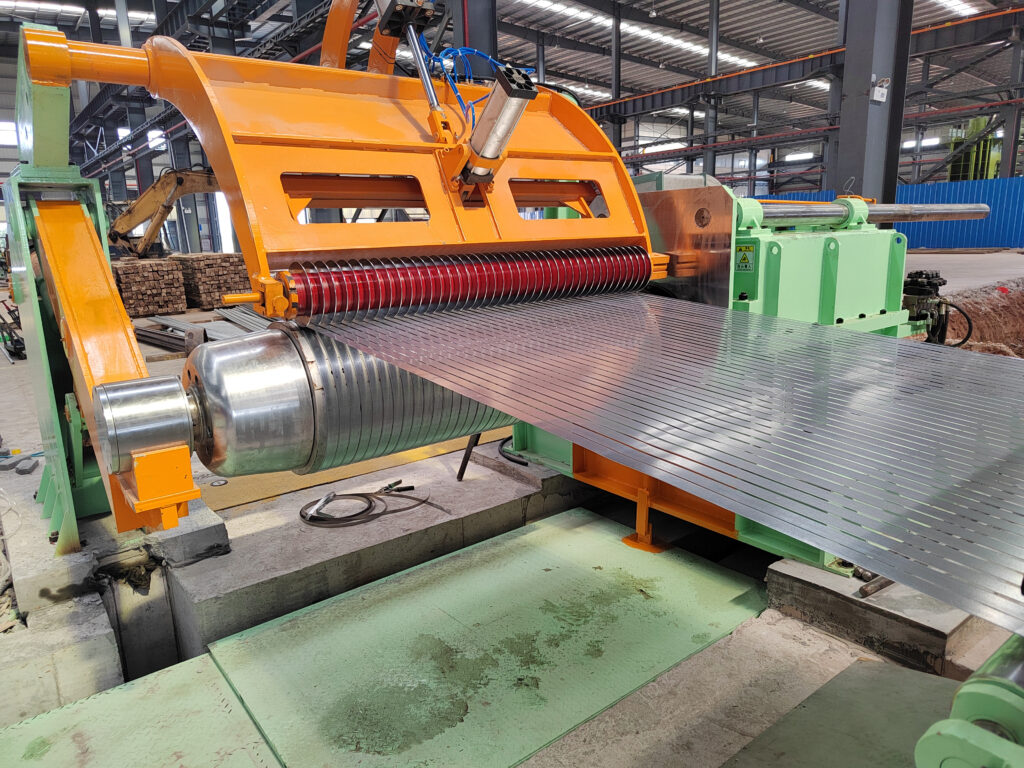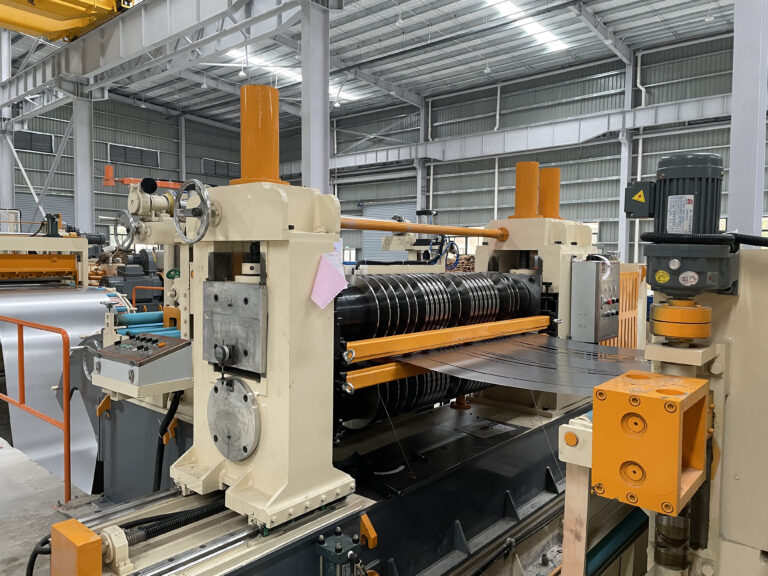Ultimate Guide to Metal Slitting Lines: Precision Processing for 2025 and Beyond
This guide dives deep into the slitting line process, key components, applications, and why advanced models from leaders like MaxDo Machinery are reshaping industrial workflows.
In the fast-paced world of metal fabrication, metal slitting lines stand out as indispensable tools for transforming wide coils into narrower, uniform strips. Whether you’re a service center manager optimizing inventory or an OEM engineer streamlining supply chains, understanding slitting lines can unlock significant efficiencies in production. This guide dives deep into the slitting line process, key components, applications, and why advanced models from leaders like MaxDo Machinery are reshaping industrial workflows.
What Is a Metal Slitting Line?
A metal slitting line is a specialized production system designed to cut large metal coils—typically steel, aluminum, or alloys—into multiple narrower strips along their length. This process, known as longitudinal slitting, enables precise width control without compromising material integrity, making it a cornerstone of downstream manufacturing.

Unlike basic shearing, slitting lines handle high-volume operations with automation, ensuring tight tolerances down to ±0.005 inches. They process everything from thin foils for electronics to heavy-gauge sheets for construction, supporting industries that demand consistency and minimal waste. For a technical overview, see the metal slitting process on Wikipedia.
At MaxDo Machinery, our slitting lines cater to B2B needs, from custom widths for automotive suppliers to high-speed setups for appliance fabricators.
How Does the Slitting Line Process Work in Metal Processing?
The slitting line process follows a streamlined sequence to convert raw coils into ready-to-use strips, minimizing downtime and material loss.
Step-by-Step Breakdown of Slitting Operations
- Uncoiling and Entry Preparation: A heavy-duty uncoiler grips the master coil, typically weighing 10-35 tons, and unwinds it under controlled tension. Hydraulic mandrels expand to secure inner diameters of 20-24 inches, while entry pinch rolls and straighteners flatten the strip to prevent defects like camber.
- Tensioning and Alignment: Servo-driven systems apply precise tension across the material, using dancer arms to maintain stability. Edge guides align the strip centrally, ensuring accurate feeding into the cutting zone.
- Slitting Action: Rotary carbide blades in a slitter head—often configured in turrets for quick changes—slice the strip into specified widths. Gaps between blades adjust via HMI controls, handling thicknesses from 0.3mm to 12mm without burrs or edge cracks.
- Scrap Management and Recoiling: Edge trimmers remove outer scraps, which are wound onto separate reels. The narrower strips then pass through a tension bridle and onto individual recoiler mandrels, wound at speeds up to 250 m/min for balanced coils.
This workflow not only boosts yield rates to over 96% but also integrates real-time monitoring to flag issues like strip wander. In practice, a mid-sized slitting line can process 300-2,150mm widths, ideal for integration in hybrid setups like cut-to-length lines.
Key Benefits of Slitting Lines in Industrial Applications
Why invest in slitting lines? For B2B operations, they deliver measurable ROI through reduced scrap, faster throughput, and versatile material handling.
Enhanced Productivity and Cost Savings
Modern slitting lines cut material waste by up to 40%, turning potential scrap into sellable narrower strips. For instance, a facility processing galvanized steel for HVAC ducts can achieve 400 ft/min speeds, slashing cycle times compared to manual methods. Automation features like auto-blade indexing minimize setup to under 10 minutes, directly impacting labor costs.
Versatility Across Industries
Slitting lines support a broad spectrum of applications:
- Automotive and Transportation: Precise strips for body panels and chassis components.
- Construction and Energy: Wider gauges for roofing and solar panel frames.
- Electronics and Appliances: Thin, burr-free edges for circuit housings and white goods.
According to the Steel Manufacturers Association, precision slitting has driven a 15% efficiency gain in U.S. metal service centers since 2020. MaxDo’s systems extend this to coated metals and alloys, ensuring surface protection during processing.
Advanced Technologies Driving Slitting Line Innovation
What sets 2025 slitting lines apart? Integration of Industry 4.0 elements like AI-driven diagnostics and servo precision.
Automation and Precision Enhancements
Digital controls enable predictive maintenance, reducing unplanned downtime by 30%. Multi-zone tension systems with feedback loops correct issues like crossbow or edge wave in real time, while servo recoiling ensures uniform coil densities. MaxDo’s advanced technology platforms incorporate these, supporting thicknesses up to 12mm and widths over 2 meters.
For hybrid operations, slitting lines pair seamlessly with flatbed sheeters, offering end-to-end coil-to-sheet conversion.
MaxDo Machinery’s Slitting Line Expertise: Components and Specifications
MaxDo Machinery excels in customizable slitting solutions, processing carbon steel, aluminum, hot-rolled, cold-rolled, and coated metals. Our MD series handles coil weights up to 35 tons, strip widths to 2,150mm, and thicknesses from 0.3mm to 12mm, with line speeds reaching 250 m/min.
Core Components of a MaxDo Slitting Line
- Uncoiler: Hydraulic expansion for 20-24″ I.D., servo tension control, energy-efficient drives cutting power use by 60%.
- Slitter Head: Turret-mounted carbide blades, HMI-adjusted gaps, integrated edge trimmer with scrap winder.
- Tension Control Unit: Independent zones with dancer feedback to eliminate defects like twist or buckle.
- Recoiler: Dual-mandrel design for non-stop operation, speeds up to 250 m/min with rapid accel/decel.
- Ancillary Systems: Crop shear for head-end trim, optional surface protection applicators, and automated loop accumulators.
MD Series Specifications Comparison
| Model | Working Width (mm) | Thickness Range (mm) | Coil Weight (tons) | Line Speed (m/min) | Total Power (kW) |
|---|---|---|---|---|---|
| MD-850 | 20-820 | 0.3-12 (varied gauges) | 10-35 | 1-250 | 138.5 |
| MD-1350 | 300-1,300 | 0.3-12 | 10-35 | 1-250 | 318.5 |
| MD-1650 | 300-1,650 | 0.3-12 | 10-35 | 1-250 | 422.5 |
| MD-2200 | 300-2,150 | 0.3-12 | 10-35 | 1-250 | 422.5 |
These specs make MaxDo lines ideal for high-volume B2B environments, with customizable options for specific ROI goals.
Why Choose MaxDo Slitting Lines for Your Operations?
In a competitive market, MaxDo’s slitting lines combine robust engineering with forward-thinking design, ensuring scalability and reliability. From project planning to installation, our focus on safety and efficiency—backed by rigorous testing—delivers lines that pay for themselves in under two years.
Ready to elevate your metal processing? Contact us today for a tailored consultation on slitting, cut-to-length, or flatbed sheeter solutions. Discover how our equipment can optimize your workflow and drive sustainable growth.




